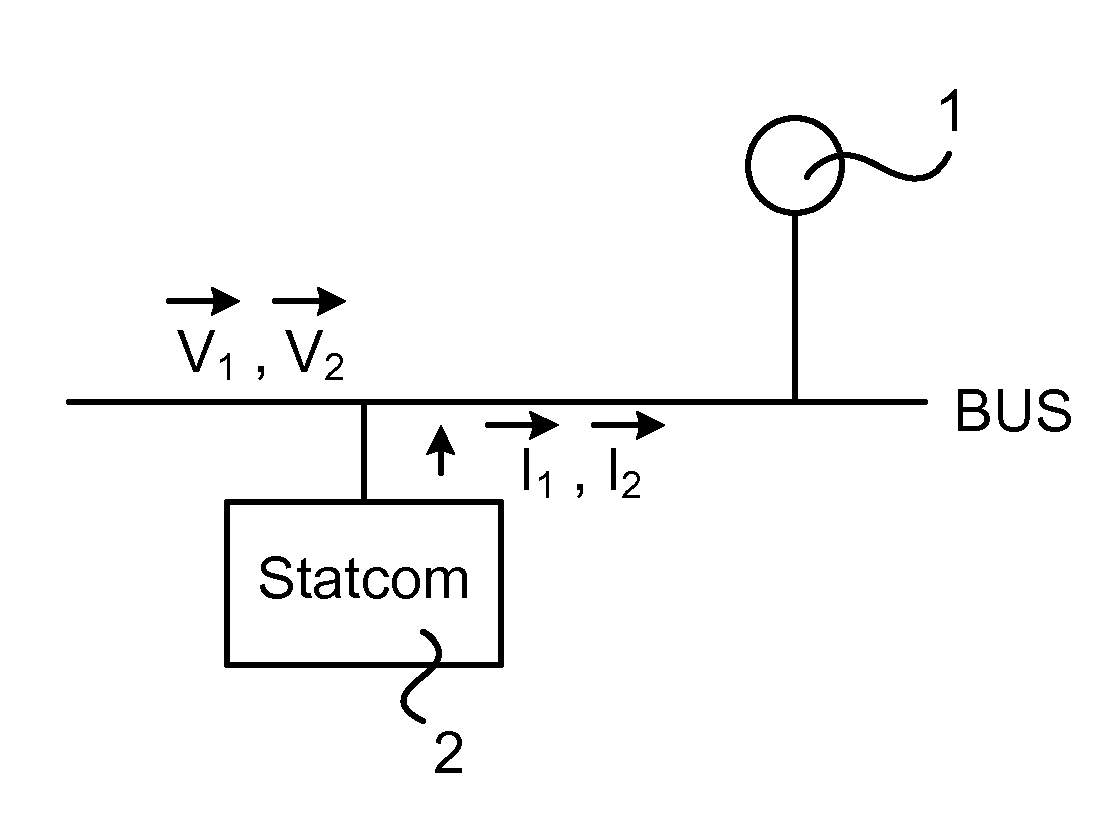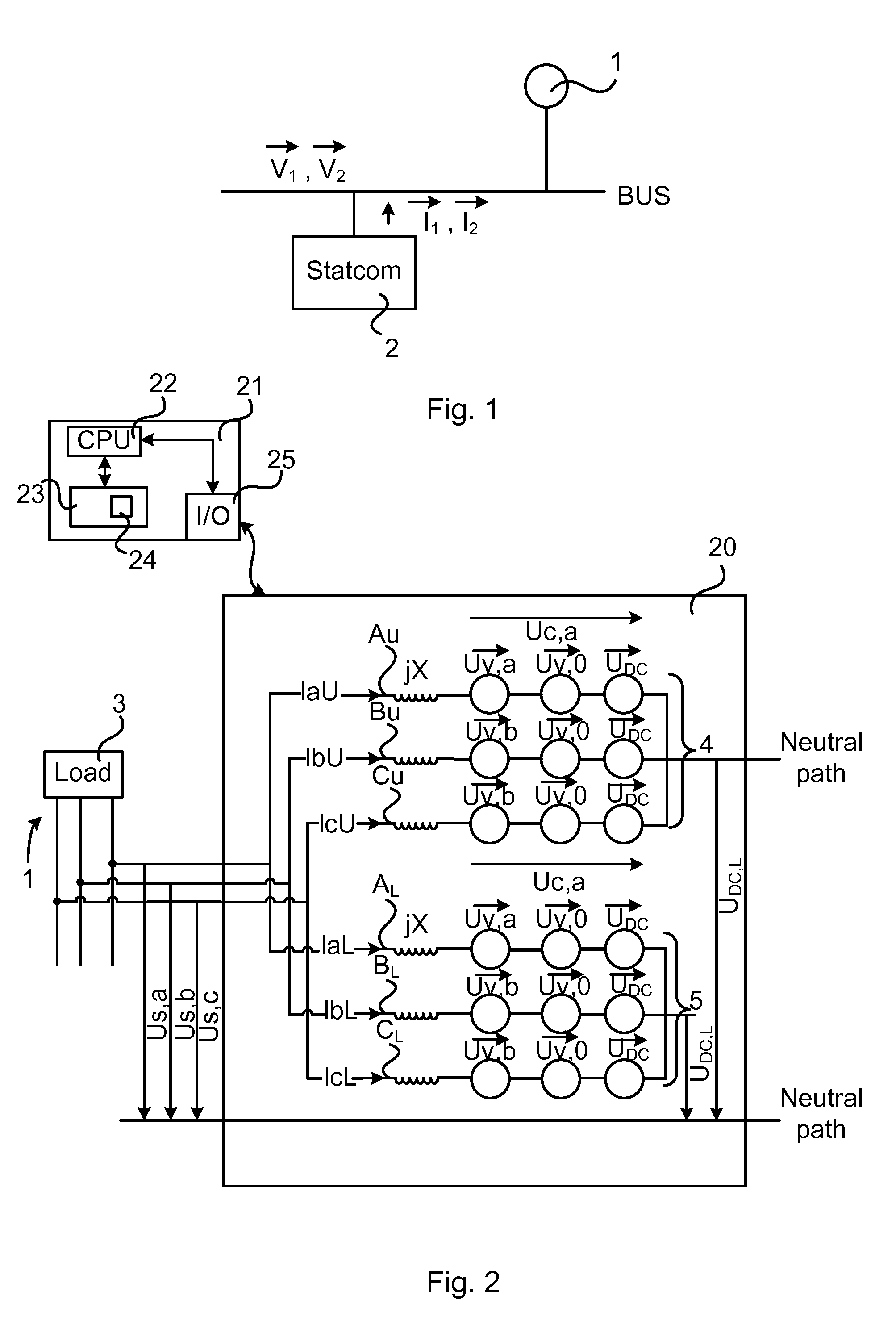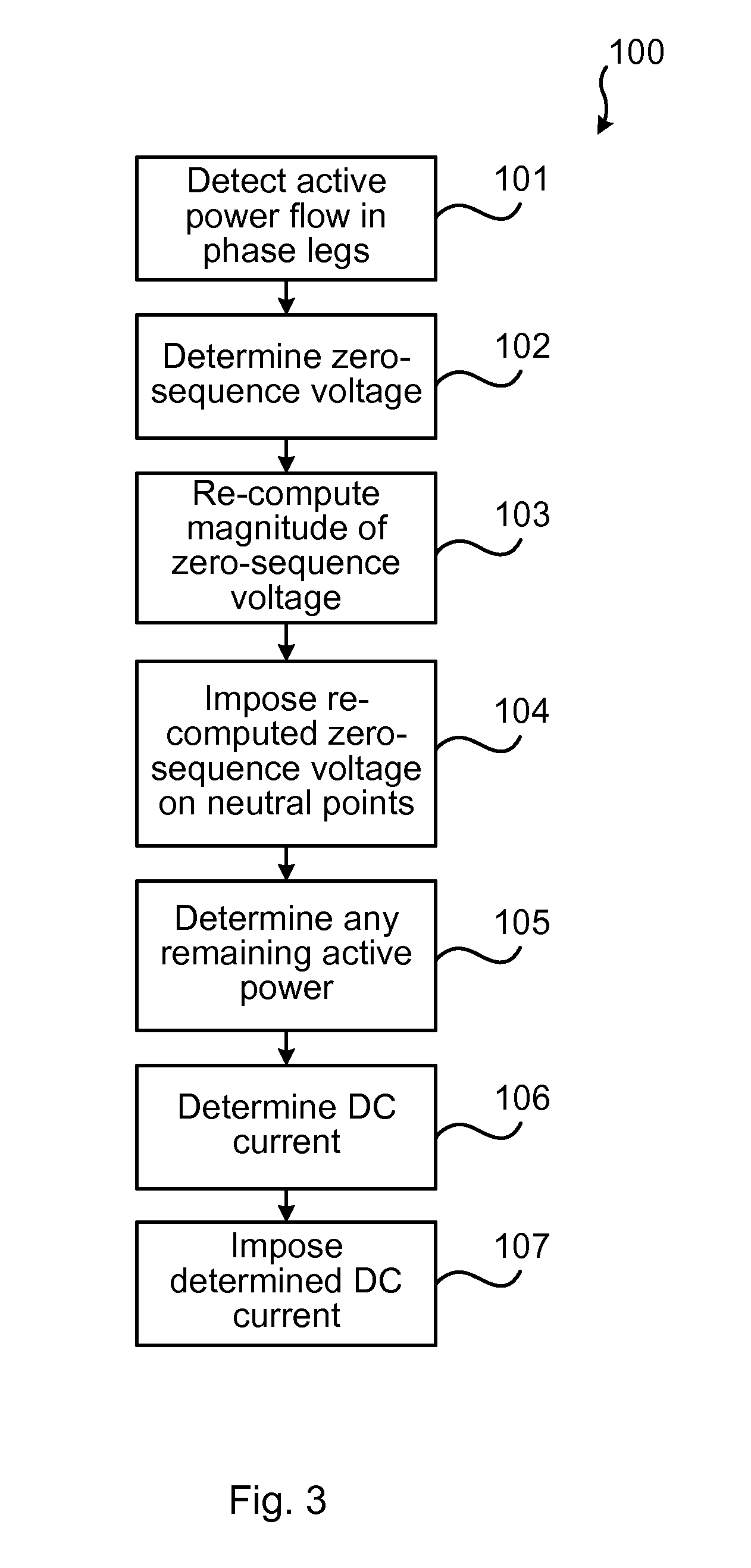Methods and devices for controlling active power flow in a three-phase modular multilevel converter
- Summary
- Abstract
- Description
- Claims
- Application Information
AI Technical Summary
Benefits of technology
Problems solved by technology
Method used
Image
Examples
Embodiment Construction
[0034]In the following description, for purposes of explanation and not limitation, specific details are set forth such as particular architectures, interfaces, techniques, etc. in order to provide a thorough understanding. In other instances, detailed descriptions of well-known devices, circuits, and methods are omitted so as not to obscure the description with unnecessary detail. Same reference numerals refer to same or similar elements throughout the description.
[0035]FIG. 1 illustrates schematically an environment in which embodiments of the invention may be implemented. A modular multilevel converter (MMC), and in particular a MMC-based static synchronous compensator (STATCOM) 2 is connected to an electrical power network 1 bus.
[0036]In the FIG. 1, {right arrow over (V)}1, {right arrow over (V)}2 denote power network 1 voltages, in particular positive and negative sequence voltages, respectively, and the bus voltage VBUS is V1+V2. Under balanced conditions, the STATCOM 2, which...
PUM
 Login to View More
Login to View More Abstract
Description
Claims
Application Information
 Login to View More
Login to View More - R&D
- Intellectual Property
- Life Sciences
- Materials
- Tech Scout
- Unparalleled Data Quality
- Higher Quality Content
- 60% Fewer Hallucinations
Browse by: Latest US Patents, China's latest patents, Technical Efficacy Thesaurus, Application Domain, Technology Topic, Popular Technical Reports.
© 2025 PatSnap. All rights reserved.Legal|Privacy policy|Modern Slavery Act Transparency Statement|Sitemap|About US| Contact US: help@patsnap.com



